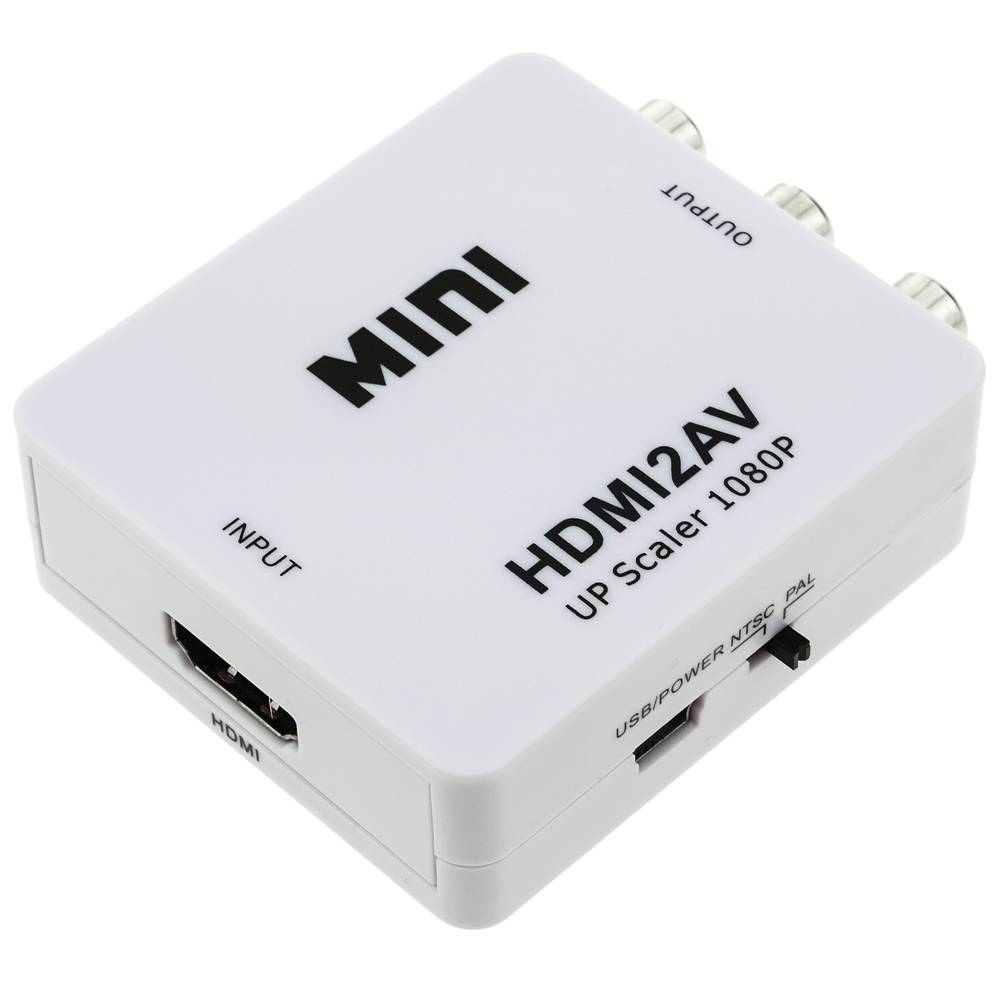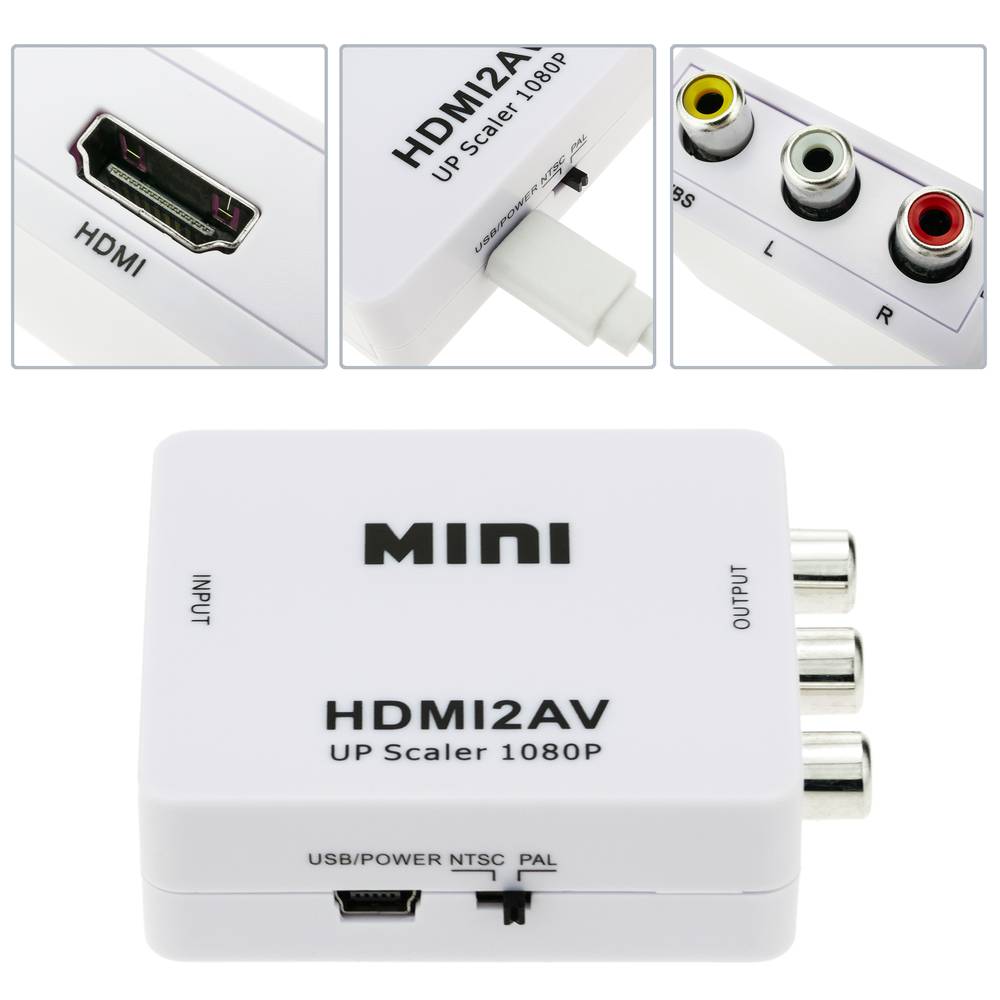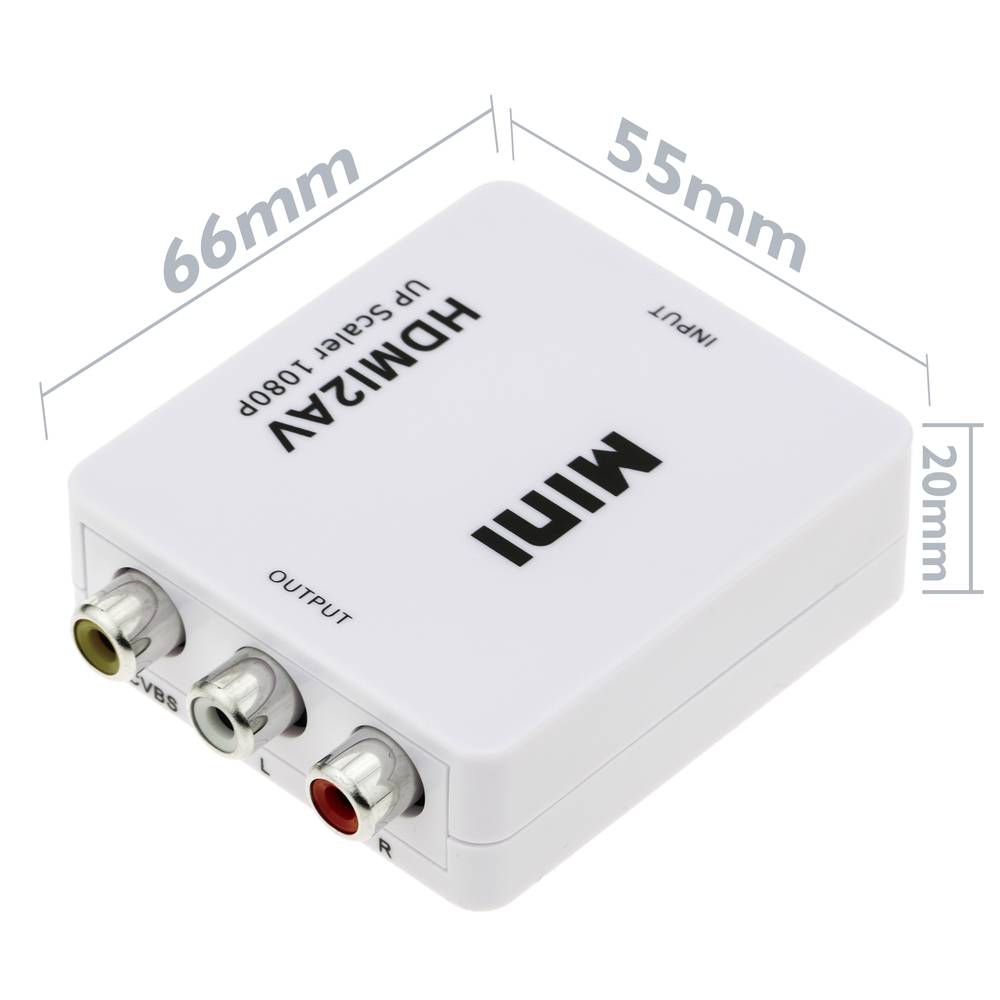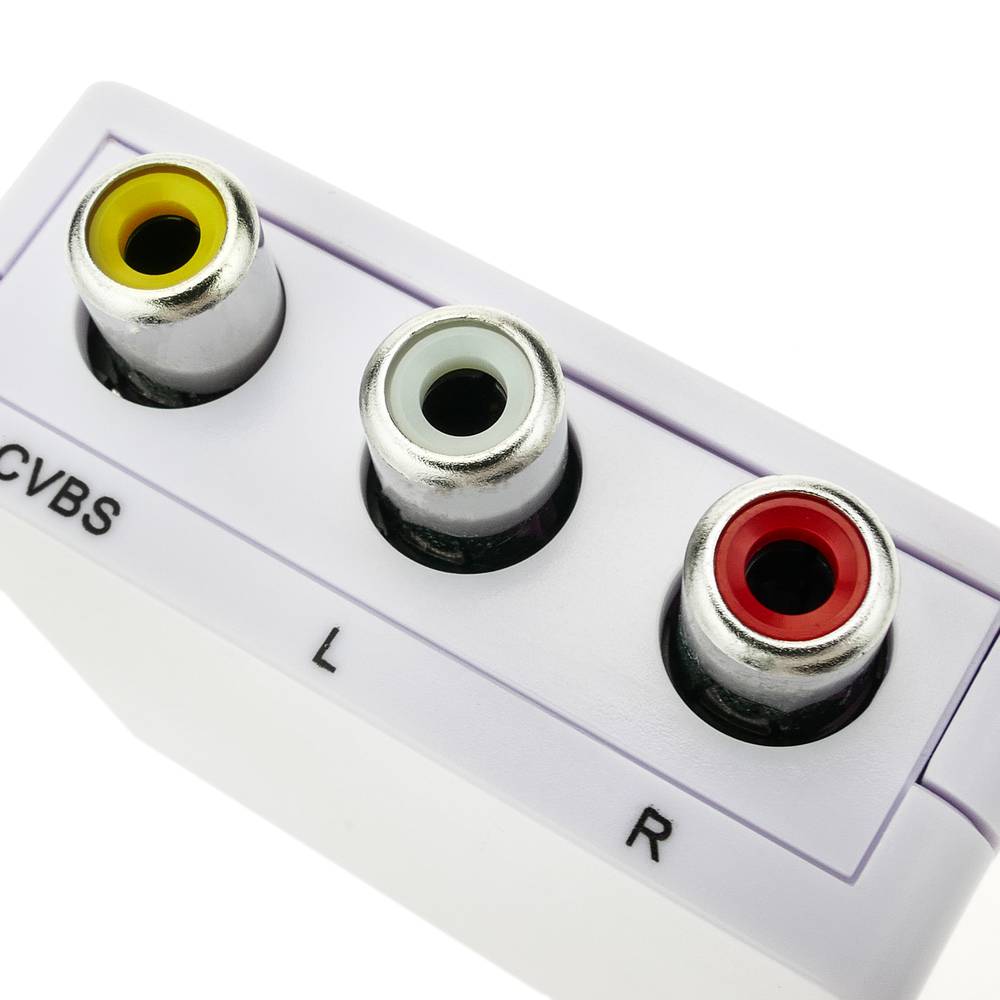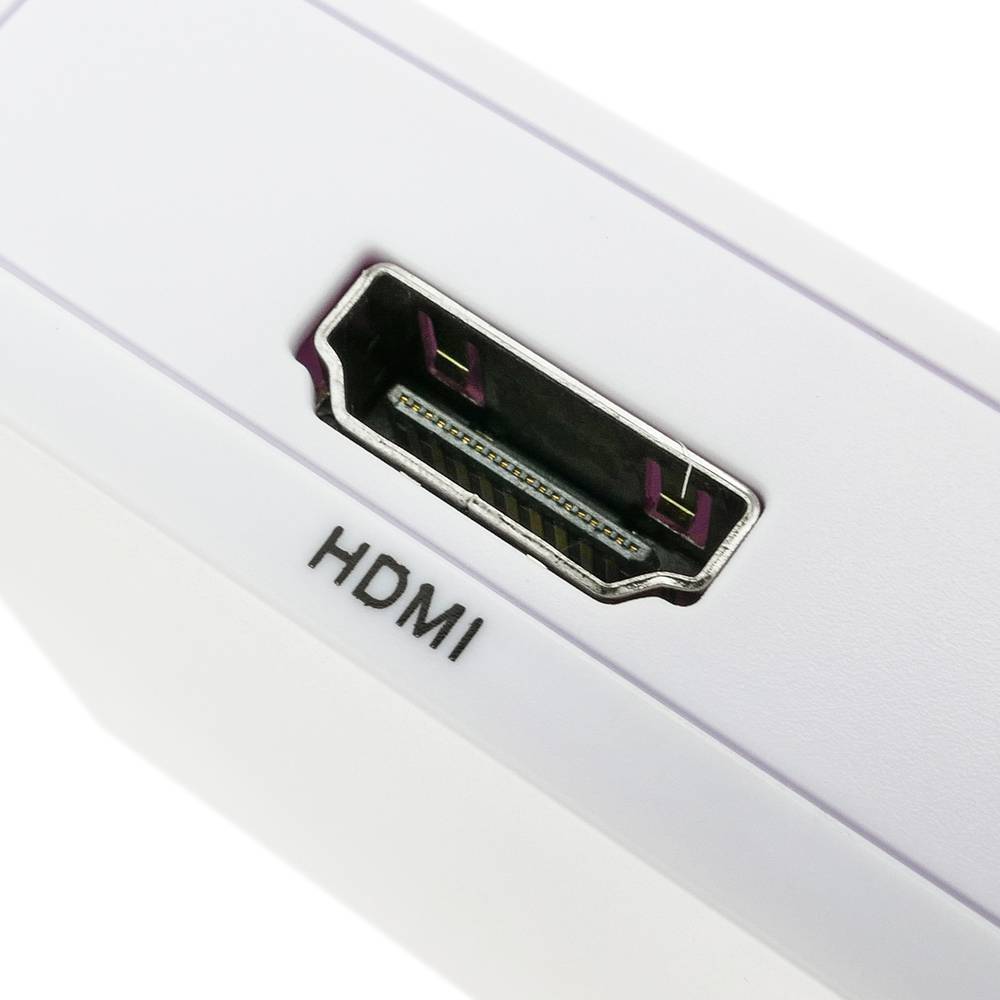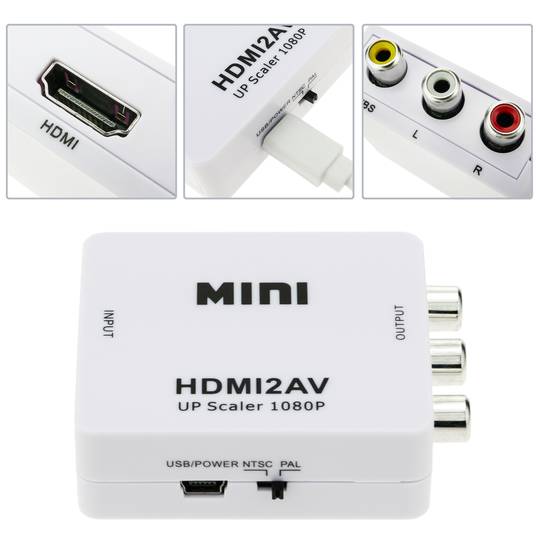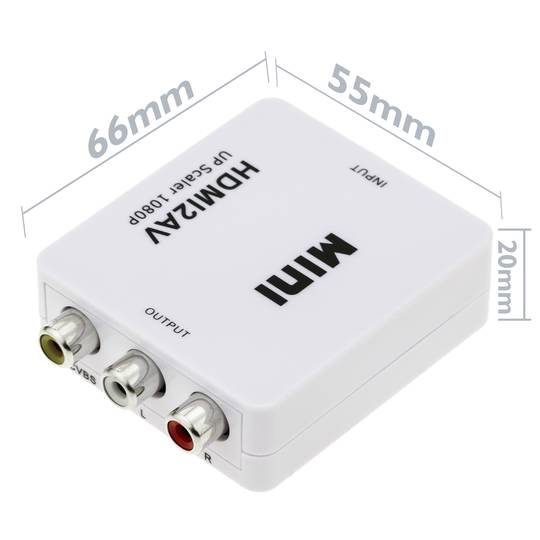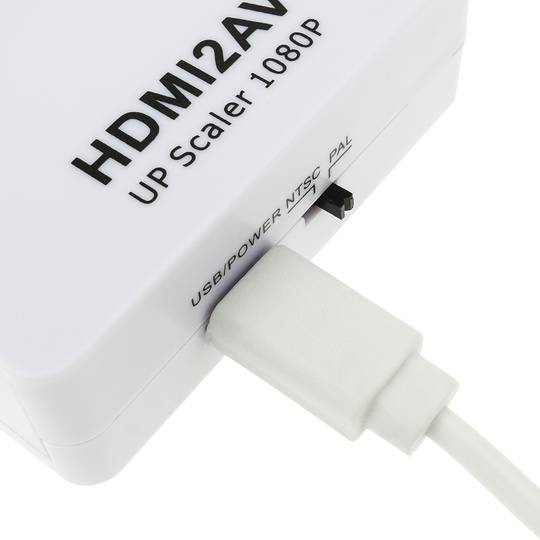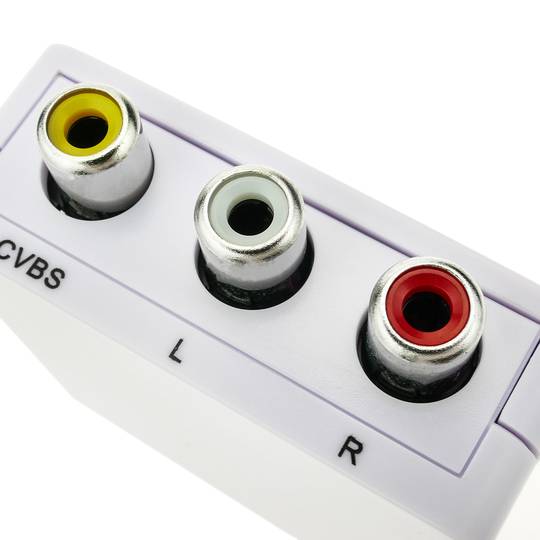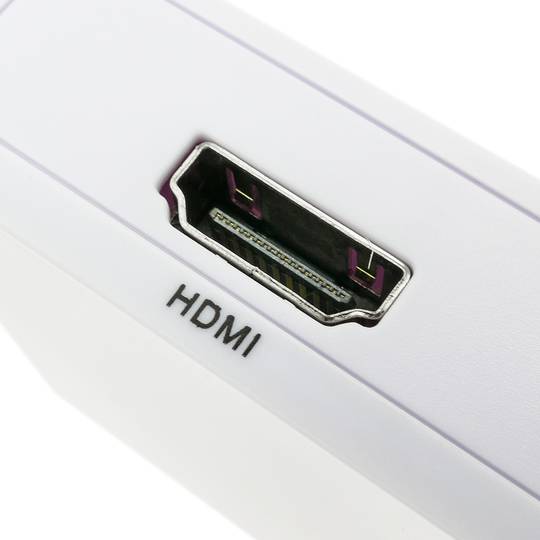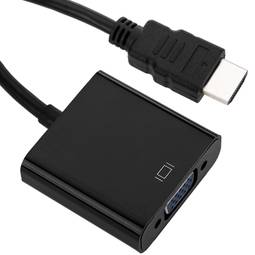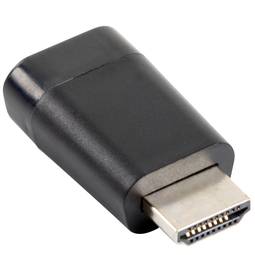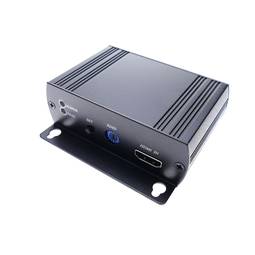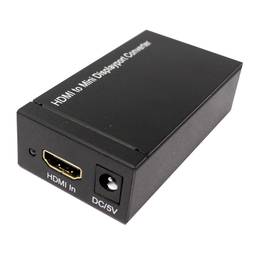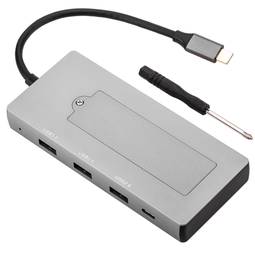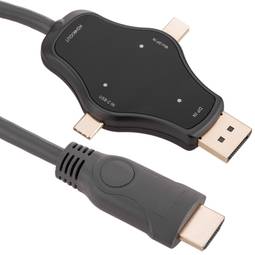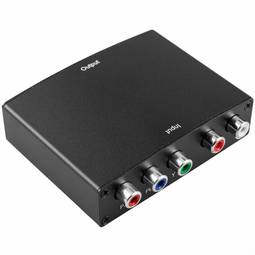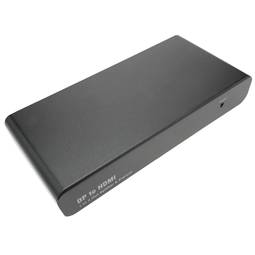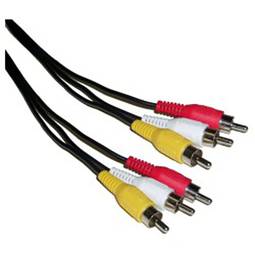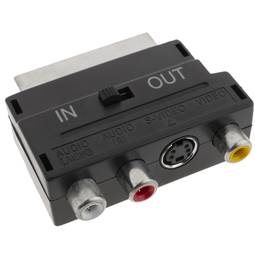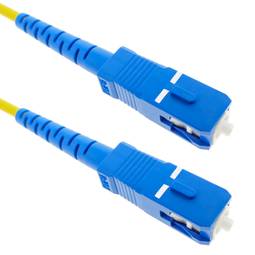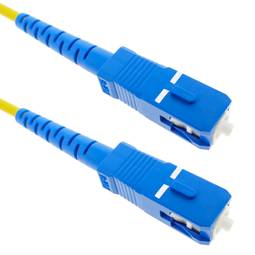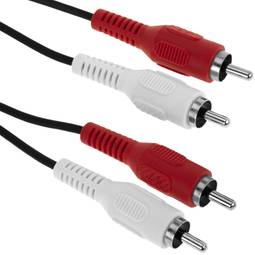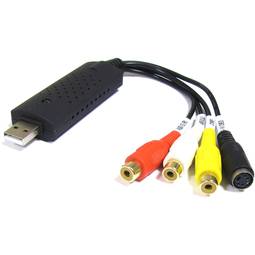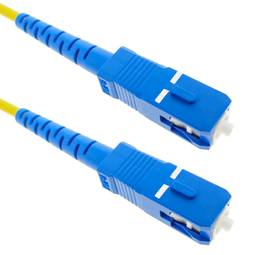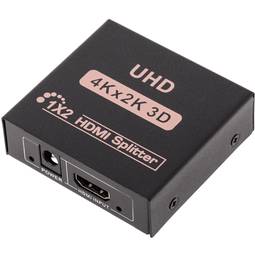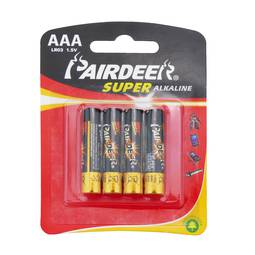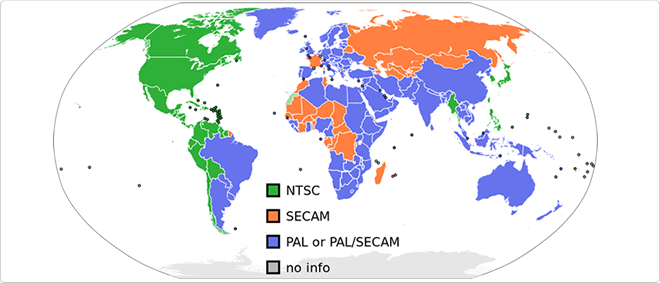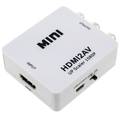12/22/2025 2:05 p.m.
https://cablematic.com/en/products/hdmi-to-analog-audio-and-video-rca-converter-HC075/
https://cablematic.com/en/products/hdmi-to-analog-audio-and-video-rca-converter-HC075/
HDMI to analog audio and video RCA Converter
REF: HC075
Specifications
- It allows connecting computers or players with HDMI output or other similar equipment to equipment that hasAnalog audio and composite video input.
- Easy to use. It does not require special drivers. Connect and operate.
- Compatible HDCP 1.2 and HDMI 1.3.
- Bandwidth of 165MHz/1.65 Gbps per channel. This is 6.75 Gbps for all channels.
- Based on a 10-bit digital-to-analog converter (10-bit DAC).
![play_button]() Watch video
Watch video
More info
PVP
€10.90
Price including VAT:
€10.90
PVD
€9.24
PVP: Retail price.
Check conditions.
PVP: Sale price to distributors.
Check conditions.
Immediate delivery
The delivery times are approximate and may vary depending on the selected carrier.
warranty
returns
safe
Specifications
- It allows connecting computers or players with HDMI output or other similar equipment to equipment that hasAnalog audio and composite video input.
- Easy to use. It does not require special drivers. Connect and operate.
- Compatible HDCP 1.2 and HDMI 1.3.
- Bandwidth of 165MHz/1.65 Gbps per channel. This is 6.75 Gbps for all channels.
- Based on a 10-bit digital-to-analog converter (10-bit DAC).
More info
HDMI to composite video (CVBS) signal converter with stereo analog audio output. It has a type A female HDMI input connector and RCA analog audio and video output connector. The audio and video output signals are extracted from the digital HDMI input signal.
Specifications - It allows connecting computers or players with HDMI output or other similar equipment to equipment that hasAnalog audio and composite video input.
- Easy to use. It does not require special drivers. Connect and operate.
- Compatible HDCP 1.2 and HDMI 1.3.
- Bandwidth of 165MHz/1.65 Gbps per channel. This is 6.75 Gbps for all channels.
- Based on a 10-bit digital-to-analog converter (10-bit DAC).
- Maximum input resolution (HDTV): 1080p at 60 Hz.
- Requires fuente of 5 VDC power supply (150 mA). Includes male USB power cable to miniUSB 30cm male.
- Size: 66 x 55 x 20 mm.
- Output: RCA (audio and video)
- Input: HDMI female type A.
- It has NTSC/PAL selector.
- Gross Weight: 70 g
- Product size (width x depth x height): 6.8 x 5.4 x 2.0 cm
- Number of packages: 1
- Packages size: 13.0 x 9.0 x 3.0 cm
Technical terms
- HDMI
- USB
- MicroUSB
- Mini USB
- Hz
- NTSC and PAL
- USB 3.0
- 1080p
- HDCP
- Reversible USB Type-C
- CVBS
- Gbps
- HDTV
- VDC
- RCA
- Electrical cables according to number of conductors
HDMI
The English acronym "HDMi" refers to "High Definition Multimedia Interface", that is, it corresponds to the initials of high definition multimedia interface.
The HDMi interface allows the transmission of video and audio between different devices, supporting the video resolutions 480i, 480p, 576i, 576p, 720p, 1080i, 1080p, 1440p, 1600p.
Different versions of HDMi
HDMi 1.0
- December 2002.
- Maximum transfer of 4.9 Gbit / s.
- Support up to 165 Mpixels / s in video mode (1080p 60Hz or UXGA) and 8 channels / 192 kHz / 24-bit in audio mode.
HDMi 1.2
- August 2005.
- Added support for One Bit Audio, used in Super Audio CD, up to 8 channels.
- HDMi Type A availability for PC connectors.
HDMi 1.3
- June 2006
- Bandwidth at 340 MHz.
- 10.2 Gbit / s data rate.
- Dolby TrueHD and DTS-HD,
HDMi 1.4
- Send high definition video and audio,
- 3D data and video.
- FullHD to XHD (eXtended High Definition) up to 4096 × 2160 pixels (24 frames per second) or 3840 × 2160 to (30 frames per second).
- Audio return channel that will require fewer cables to have a surround sound system connected to the television.
- Ethernet connection built into the cable itself with speeds of up to 100 Mbit / s.
HDMi 2.0
- September of 2013
- Bandwidth up to 18 Gbit / s
- 4K @ 50/60 (2160p) video
- Up to 32 audio channels for a multi-dimensional immersive experience
- Up to 1536kHz audio frequency for maximum sound fidelity
- Simultaneous delivery of 2 streaming video for multiple users on the same screen
- Audio streaming up to 4 users
- Support Theater Angle 21: 9 radio
- Dynamic synchronization of video and audio in streaming
- CEC command extensions to control multiple devices from a single point.
Types of HDMi
Type A (in image 1): It is the most standard connector used in almost all devices.
Type B (in image 2): It is a very little used connector.
Type C (in image 3): It is a connector widely used in tablets, smartphones and other devices.
Type D (in image 4): It is a connector used in smartphones.
Type E (in image 5): It is a connector used in vehicle connectivity.
The HDMi interface allows the transmission of video and audio between different devices, supporting the video resolutions 480i, 480p, 576i, 576p, 720p, 1080i, 1080p, 1440p, 1600p.
Different versions of HDMi
HDMi 1.0
- December 2002.
- Maximum transfer of 4.9 Gbit / s.
- Support up to 165 Mpixels / s in video mode (1080p 60Hz or UXGA) and 8 channels / 192 kHz / 24-bit in audio mode.
HDMi 1.2
- August 2005.
- Added support for One Bit Audio, used in Super Audio CD, up to 8 channels.
- HDMi Type A availability for PC connectors.
HDMi 1.3
- June 2006
- Bandwidth at 340 MHz.
- 10.2 Gbit / s data rate.
- Dolby TrueHD and DTS-HD,
HDMi 1.4
- Send high definition video and audio,
- 3D data and video.
- FullHD to XHD (eXtended High Definition) up to 4096 × 2160 pixels (24 frames per second) or 3840 × 2160 to (30 frames per second).
- Audio return channel that will require fewer cables to have a surround sound system connected to the television.
- Ethernet connection built into the cable itself with speeds of up to 100 Mbit / s.
HDMi 2.0
- September of 2013
- Bandwidth up to 18 Gbit / s
- 4K @ 50/60 (2160p) video
- Up to 32 audio channels for a multi-dimensional immersive experience
- Up to 1536kHz audio frequency for maximum sound fidelity
- Simultaneous delivery of 2 streaming video for multiple users on the same screen
- Audio streaming up to 4 users
- Support Theater Angle 21: 9 radio
- Dynamic synchronization of video and audio in streaming
- CEC command extensions to control multiple devices from a single point.
Types of HDMi
Type A (in image 1): It is the most standard connector used in almost all devices.
Type B (in image 2): It is a very little used connector.
Type C (in image 3): It is a connector widely used in tablets, smartphones and other devices.
Type D (in image 4): It is a connector used in smartphones.
Type E (in image 5): It is a connector used in vehicle connectivity.



